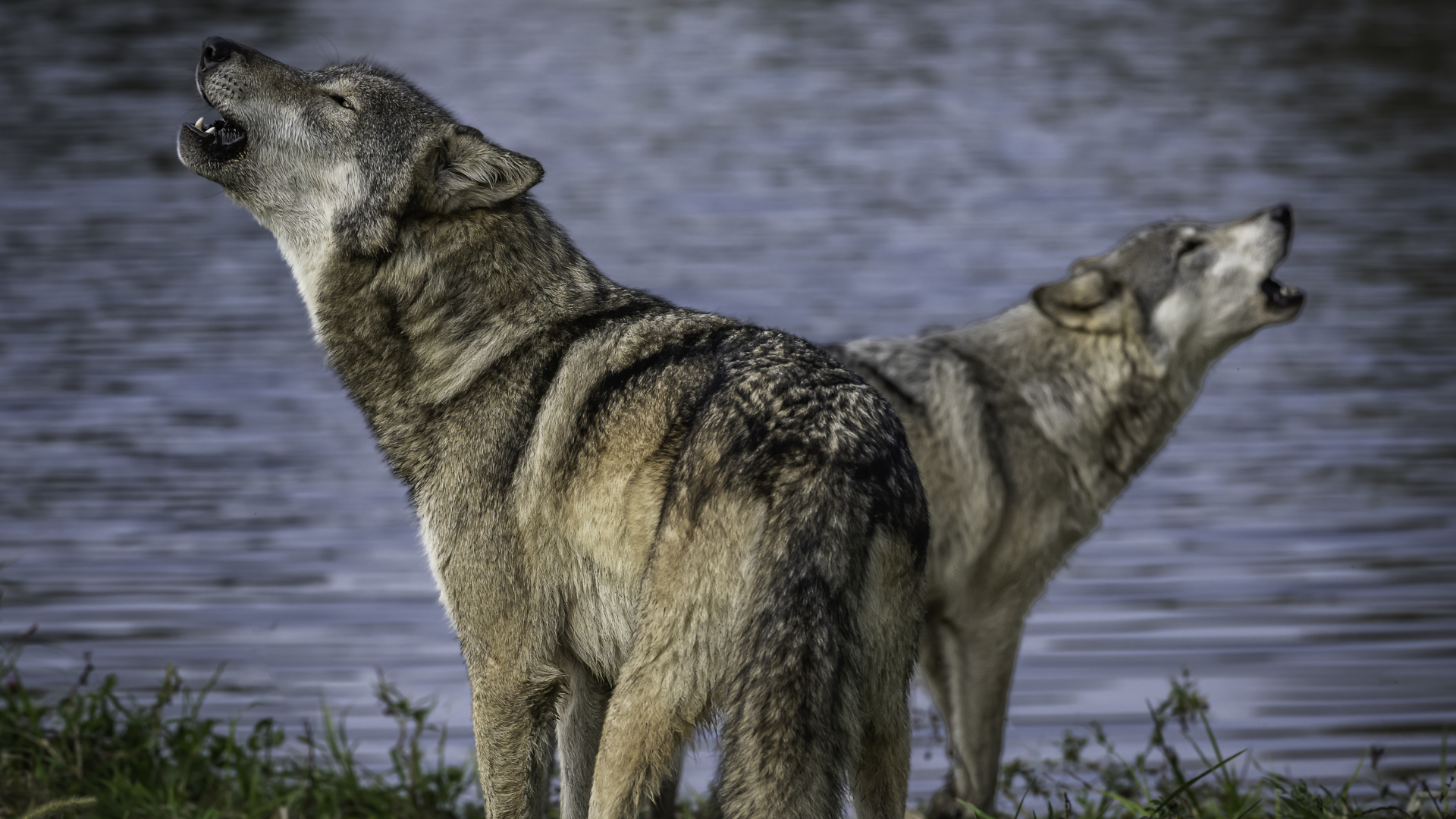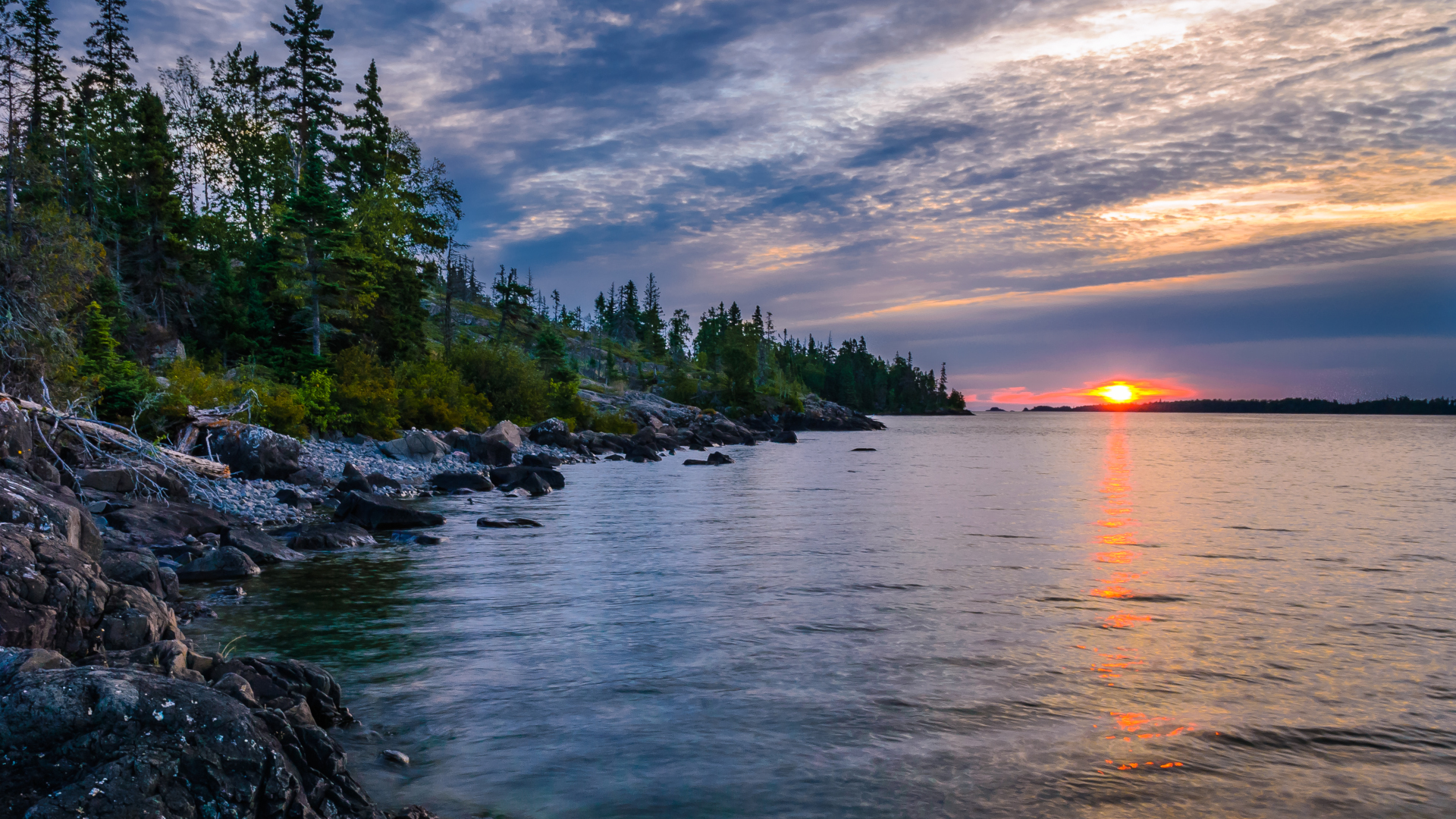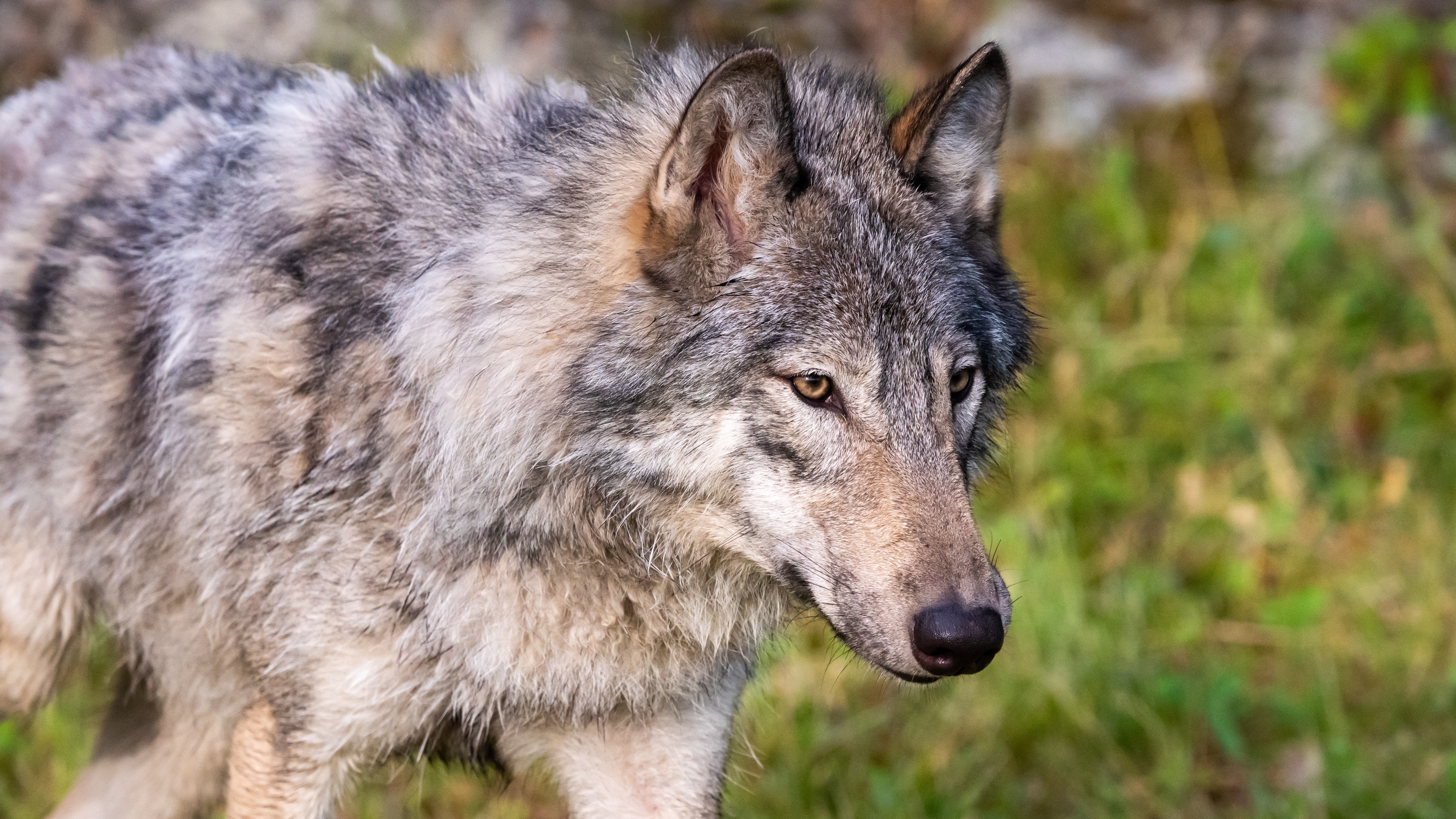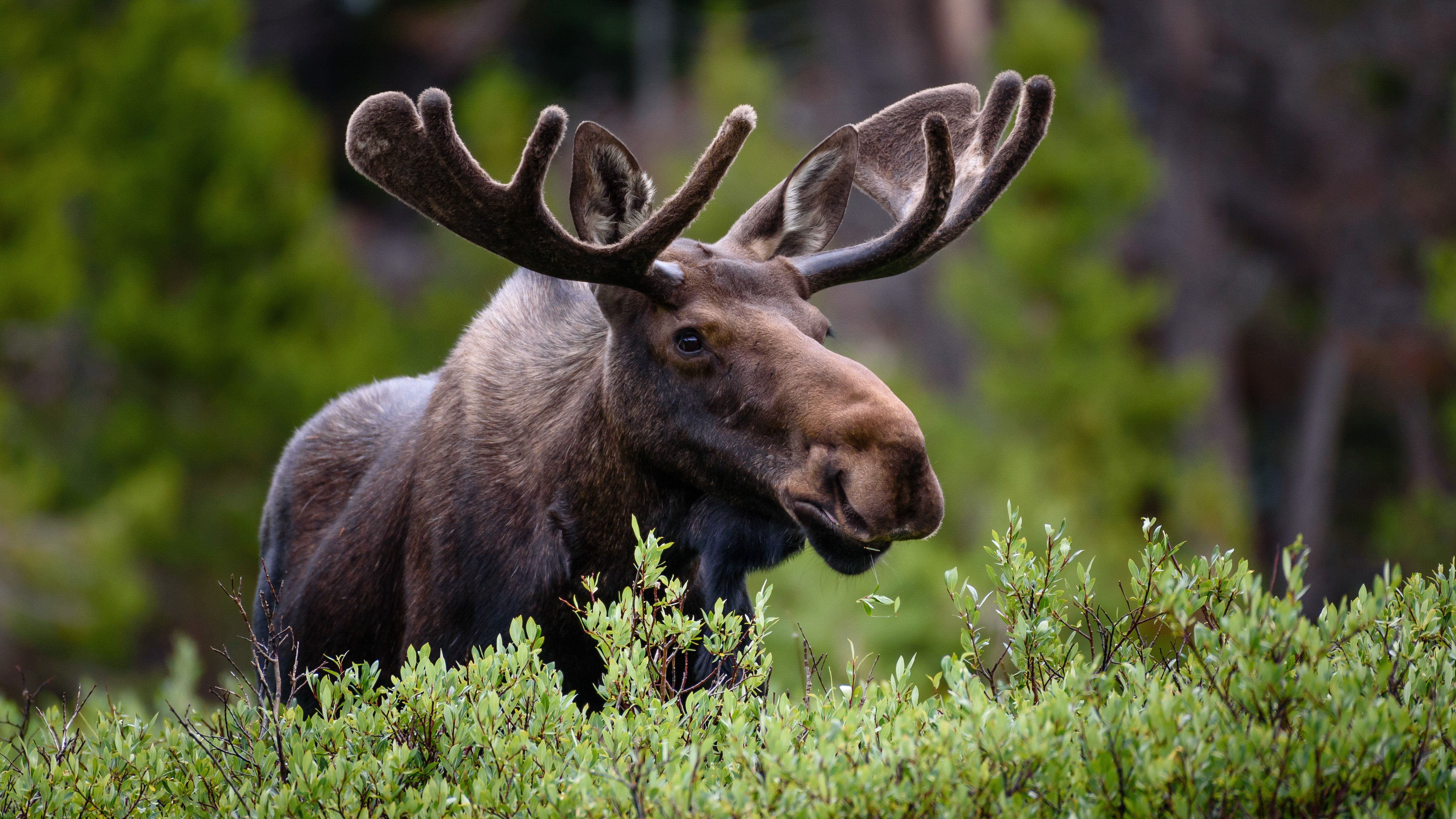Wolves returned to Isle Royale National Park 5 years ago, and they’re thriving
We speak to a researcher about the recent report on the Isle Royale Wolf-Moose project

If you’re planning a trip to Isle Royale National Park this summer, you can expect to feast your eyes on miles of pristine shoreline, explore secluded caves, wander the boardwalk through the swamp forests and stroll in the shade from the canopy of the boreal forests. You’ll likely see wildlife like moose and beavers and if you’re really lucky, you might glimpse a gray wolf just before it disappears into the trees.
A small island in vast Lake Superior positioned 15 miles from the mainland, might seem an unlikely place to encounter such an animal, but wolves have existed on Isle Royale since the 1950s. Sarah Hoy, a researcher at Michigan Tech University, explains that wolves first arrived here thanks to the frigid winter conditions you’d expect from an area that’s closer to Ontario than it is Michigan.
“Wolves had naturally come across to the island by crossing ice bridges between the island and the mainland.”
Discovering a healthy moose population on the island to sustain them, wolves have endured here now for more than six decades, spawning the Isle Royale Wolf-Moose Project in 1958 which is today the longest-running study of predator-prey populations in the world. Hoy joined the project seven years ago and co-leads it with two other researchers, spending between four and five weeks on the island each winter, when the National Park is closed to visitors, observing the wolf and moose populations. But back in 2008, her colleagues noticed something concerning – there were very strong indications that the wolf population was not doing very well.
As temperatures have increased over time due to global warming, those ice bridges that the wolves previously relied upon form less frequently. When they do form, they sometimes only last for a day or two, not leaving enough time for migration between mainland and island. Consequently, the wolf population on the island became so inbred over time that it became impossible for them to reproduce. By 2015, around the time that Hoy came on board, the wolf population on Isle Royale had dwindled to a meager two wolves.

“They’re doing everything you expect wolves to do"
The National Parks Service decided to take action, and in the fall of 2018, 20 wolves were translocated from Minnesota, northern Michigan and other areas of the Lake Superior region to the island to try to re-establish a wolf population. Less than five years later, the wolf population here is up to more than 30, in line with previous populations, and there were three or four new litters born in 2022.
“They’re doing everything you expect wolves to do. They've got territories, they’re producing pups, they're killing moose, they're defending their territories,” reports Hoy.
All the latest inspiration, tips and guides to help you plan your next Advnture!
Isle Royale is only about 206 square miles and a single wolf can have a territory that’s anywhere from seven to over 200 miles, roaming up to 30 miles a day in search of food, so the current population is about as big as the researchers expect it to become.
“Having been here throughout the reintroduction, it's been really impressive to me just how resilient wolves can be, how quickly their populations can recover if you just let them and they're not being subject to high levels of human-caused mortality.”
Returning from near-extinction to normal levels in under five years might seem surprising, but Isle Royale’s remote location – it’s only accessible by ferry and plane six months a year – might actually explain some of the program’s success.
“I think Isle Royale is probably one of a few places in the world where you could release wolves into the wild and there isn't the potential of the wolves to come into conflict with people. There's no farming on the islands, you're not worried about livestock predation, there's no hunting, so there's no conflicts there, people don't have pets on the island so there's no risk that your dog's going to get killed by a wolf. It really is one of the few places in the world where they can just be wolves without any of those conflicts.”

"Wolves can have a really important influence on ecosystems"
The reintroduction of wolves to Isle Royale isn’t the first such project. The most famous example of such an initiative, of course, is in Yellowstone National Park, which began returning wolves to the area in 1995. Colorado Parks and Wildlife Commission recently finalized plans to reintroduce gray wolves to the western slope by the end of 2023. For scientists and ecologists, the move towards restoring wolf populations is exciting, but for hikers and dog walkers, the prospect is often met with fear and resistance.
However, Hoy explains that the evidence shows there are some real benefits to their preservation, beyond the ethical implications of making up for some of the damage humans have inflicted upon wolves.
“Research has been done here and in other parts of the world showing that wolves can have a really important influence on ecosystems,” says Hoy, pointing to the report from this winter’s observations, which was published on June 14. It reveals a drastic decline in the moose population, down by 379 over the previous year, with surprisingly few calves born.
If you’re a wildlife lover, this news is likely to cause you a little whiplash, but as Hoy takes the time to clarify, only 10 percent of this reduction is attributable to wolves – the remainder is largely down to food shortage created by such high levels of moose browsing in recent years – and the reduction may actually be a clear signal of a return to balance on the island.
“The number of the moose on the island had been unusually high for a number of years and the moose were starting to have really strong impacts on forest vegetation.”
Because an average adult moose can weigh over 800 lbs, they eat a lot. In the summertime, they can chow down on as much as 40 lbs of vegetation every day in an attempt to increase their body weight to help them survive the long winter when food is scarce. When there are a lot of moose on the island, that level of grazing can really start to take its toll on the forest.
“Many saplings have died or they're just not being able to grow in the way that they should. Obviously, that has long-term implications for how forests regenerate and how healthy they are.”

"Evidence suggests that wolves are not a threat to human safety"
Another argument for using wolves to help maintain the moose population is that wolf predation is actually crucial for helping to control the health of the moose as well as their numbers.
“Wolves predominantly prey on either young individuals or old individuals, or those with diseases. We’ve seen that wolves on the island will selectively prey on moose that get arthritis, and they can influence the prevalence of arthritis in the population just by being selective,” says Hoy, adding that other work shows that wolves may be important in controlling infectious diseases like tuberculosis and chronic wasting disease.
So for the surrounding ecosystem, the benefits of a healthy wolf population seem clear, but how does it all alter things for those of us who like to get out on the trails in our hiking boots or pitch a tent for a night or two in the backcountry?
“A lot of the evidence suggests that wolves are not a threat to human safety in most parts of North America in Europe. Even though the number of wolves has increased greatly in Europe, there aren’t loads of wolf attacks on people and if you're coming to Isle Royale you’re likely to injure yourself slipping on a wet rock or the boardwalk or you're more likely to run into a disgruntled moose that’s not happy that you're there,” advises Hoy, who says that these days, visitors are usually excited to tell her that they heard or saw wolves during their visit to the island.
“I would say if you are lucky enough to see a wolf, then you are lucky. Treat them like any other wild animal. Give them space and respect and enjoy that fleeting opportunity because it’s probably going to disappear into the forest pretty quickly.”
Julia Clarke is a staff writer for Advnture.com and the author of the book Restorative Yoga for Beginners. She loves to explore mountains on foot, bike, skis and belay and then recover on the the yoga mat. Julia graduated with a degree in journalism in 2004 and spent eight years working as a radio presenter in Kansas City, Vermont, Boston and New York City before discovering the joys of the Rocky Mountains. She then detoured west to Colorado and enjoyed 11 years teaching yoga in Vail before returning to her hometown of Glasgow, Scotland in 2020 to focus on family and writing.

